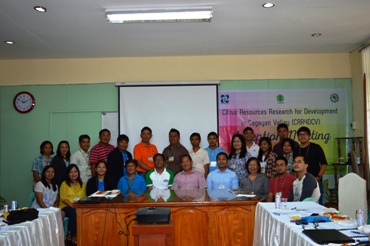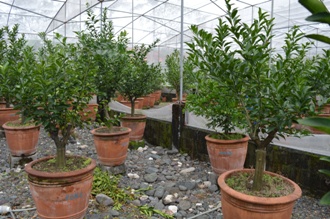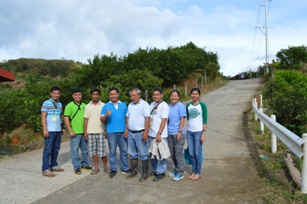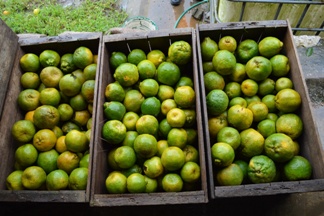The Philippine Council for Agriculture, Aquatic and Natural Resources Research and Development of the Department of Science and Technology (DOST-PCAARRD) is pushing for the R&D program, Citrus Resources Research for Development in Cagayan Valley or CRR4DCV.
The project is the first among the Regional Industry Strategic S&T Program or ISP approved for funding support by the Council.
 To be implemented by Nueva Vizcaya State University (NVSU) under the leadership of Dr. Elbert A. Sana, the program had an inception meeting for CRR4DCV recently at the Nueva Vizcaya State University (NVSU).
To be implemented by Nueva Vizcaya State University (NVSU) under the leadership of Dr. Elbert A. Sana, the program had an inception meeting for CRR4DCV recently at the Nueva Vizcaya State University (NVSU).
Cooperating agencies, which include the Cagayan Valley Agriculture and Aquatic Resources Research and Development (CVAARRD), DOST Regional Office 2 (DOST-R2), Department of Agriculture-Regional Field Office 2 (DA-RFO2) and its attached agency the Bureau of Plant Industry (BPI), and Local Government Units of Kasibu and Villaverde attended the meeting. Other cooperating agencies that were not present during the meeting are the National Plant Genetic Resources Laboratory of the University of the Philippines Los Baños (NPGRL-UPLB), Isabela State University, Quirino State University, and Cagayan State University.
 The Namujhe Integrated Farms, which was also represented during the meeting, will provide technical assistance in the implementation of the program.
The Namujhe Integrated Farms, which was also represented during the meeting, will provide technical assistance in the implementation of the program.
“The university has already established a name in research and we would like to strengthen that even further with DOST-PCAARRD’s help and with the help of other funding agencies,” NVSU Vice President for Academic Affairs and Campus Administrator Dr. Loreta Vivian R. Galima said in her opening message.
CVAARRD Consortium Director, Dr. William C. Medrano said that citrus was the first commodity packaged out of the five ISP commodities identified by CVAARRD. The program, according to him, will help develop the citrus industry not only in Nueva Vizcaya but also in the entire Cagayan Valley.
The program, which will run for three years, will aim to address the problems and gaps in the citrus industry of the region by providing strategic S&T interventions in citrus production.
Four component projects under the program will focus on the following key areas: value chain, plant genetic resources, production of quality planting materials, and integrated pest management.
 “I always believe that the product of R&D should not rest in the university, it should be adopted, and it should be commercialized,” DOST-R2 Director, Engr. Sancho A. Mabborang stressed in referring to the technologies that would be developed under the projects.
“I always believe that the product of R&D should not rest in the university, it should be adopted, and it should be commercialized,” DOST-R2 Director, Engr. Sancho A. Mabborang stressed in referring to the technologies that would be developed under the projects.
Following the inception meeting was a visit to NVSU facilities such as the citrus disease indexing laboratory and budwood increase block and nursery and the project sites in the municipalities of Kasibu and Villaverde.
Recommendations for the improvement of project implementation were provided to farmer cooperators.
Mr. Alfonso C. Namujhe Jr., Magsasaka Siyentista, owner of Namujhe Integrated Farms and pioneer of citrus production in Nueva Vizcaya, said that he adopted good management practices to improve citrus production in his farm. He believes that Nueva Vizcaya has so much potential in producing the commodity, hence he promotes and shares his knowledge to help other citrus growers.

